Dedicated Supplier
-
- Marine Lubricants: New Year, New Emission Rules Maritime Reporter, Dec 2014 #62
January 1, 2015 is an important date for ship owner and operators to ensure that their vessels, when operating inside ECA zones, are doing so in compliance with strict new emission edicts concerning the emission of sulfur. While the effects of low-sulfur fuel on marine engines is well recorded, on the eve of this new legislation we rounded up four executives from marine lubricant companies –
• Stefan Claußen, LUKOIL Marine Lubricants
• Gianluca Marucci, Castrol
• Jan Toschka, GM, Shell Marine Products, and
• Rik Truijens, Chevron Marine Lubricants
– to discuss some of the technical and logistical matters you must consider.
The move to low sulfur fuels is well recorded, but from your point of view, describe the situation that ship owners face regarding fuel selection and cylinder lubrication come January 1, 2015?
• Marucci, Castrol In general, there are three potential compliance options for vessels operating in ECAs in the short to medium term: the use of scrubbing technologies, converting to use of liquefied natural gas (LNG) or burning 0.1% sulfur fuel. There has been some uptake of scrubbers but to date this has been limited to operators of ships sailing predominantly in ECAs such as ferries and cruise ships due to the high costs of retrofitting vessels. LNG ticks the box in terms of emissions requirements but the distribution infrastructure is still in the early stages of development. Therefore, we envisage that from 2015, using 0.1% sulfur fuel will be the most practical option.
To maximize operational performance, prevent downtime and limit engine wear, operators need to proactively address fuel and lubrication changes in tandem. In particular, commonly used higher BN products such as 70BN and 100BN may compromise engine performance if used with 0.1% sulfur fuel on a prolonged basis. This is because BN refers to alkalinity and as sulfur is acidic, the less acidity there is, the lower the level of alkalinity that is required in a lubricant. Yet, with crews stretched and skills gaps on-board, the temptation to stay with an existing lubricant could be high. This is why lubricant manufacturers need to be hands-on in helping operators and their crews to manage the transition to a lower BN lubricant. Our recommendation for the majority of vessels is a 40BN lubricant with higher levels of dispersancy and detergency additives than in higher BN cylinder oils.. So far, we have been in discussion with many operators and they have already started training their crew to meet the challenges of the fuel change over. We are also working with customers to help crew better understand the implications for lubricant application in these scenarios and how to effectively switch lubricants.
Ultimately, the response to the changes in sulfur regulations in ECAs from 2015 will present a significant learning curve across the industry, spanning operational, financial and legal implications. Within this, lubricant manufacturers will need to work closely with OEMs and operators to gain a deeper understanding of how lubricants are performing with distillates once use becomes widespread. Castrol has been looking at different technologies for use with 0.1% sulfur fuels as well as with LNG, and will be monitoring in-service performance with customers and OEMs from the start of 2015.
Specifically, this reduction in sulfur content has a trickle down impact across the engine. What does the change specifically mean for marine engines? For their cylinder lubricant?
• Truijens, Chevron Marine Lubricants With the majority of operators clearly appearing to opt for operation on low sulfur distillate fuels, there is an opportunity to improve performance through the use of lubricants specifically optimized for the lower acidity of the new, cleaner and more environmentally friendly fuel. With no scrubber installed the maximum sulfur content of the fuel burned while sailing in ECAs will be capped at 0.1%wt. At this relatively low sulfur content, the amount of acids generated during the combustion process is relatively low. Since the risk of acids condensing on the cylinder liners becomes low accordingly, there is less need for alkalinity (base, BN) in the cylinder oil to neutralize acids. At this point the main task for the cylinder oil is to provide lubrication and keep the components in the combustion chamber clean, rather than prevent from corrosion occurring. And this is exactly what our latest cylinder oil development, Taro Special HT LF, was designed for.
• Toschka, Shell On a positive note, most low-speed 2 stroke engines will be able to burn fuels with a much lower sulfur content without needing significant modifications. However, it is important that the right choice of cylinder oil is made. Guidance from the OEMs has been clear in that they expect vessels to switch to a cylinder oil with a lower BN (<40) at the same time as when the customers switch to the very low sulfur fuel. Sustained running on a high BN lubricant with very low sulfur fuel can result in the formation of abrasive deposits on piston top lands, piston rings, piston ring grooves and ring lands. These deposits can disrupt the lubricant film, ultimately resulting in scuffing and cylinder liner damage.
• Marucci, Castrol The prolonged use of a high-BN lubricant of around 70BN or 100BN in a low sulphur environment can produce excessive deposit formation throughout the hot parts of the engine. One area of concern is ash deposition on the crown land which can impact the oil film, and, combined with the lack of controlled corrosion, the liner surface becomes smooth and polished and so unable to hold a stable oil film. If the condition continues, scuffing and total destruction of the liner surface can occur due to metal-to-metal contact.
Frankly, there seems to be plenty of confusion in the market today regarding fuel and lube choices. Please discuss your company’s investment & efforts in this regard, specifically discussing the rationale behind the solution you offer.
• Claußen, LUKOIL Our aim is to help the operator to manage lubrication of two stroke engines. To this end we have developed iCOlube, an intelligent Cylinder Oil lubrication unit designed to use fresh or used system oil to optimize NAVIGO 100 MCL. The unit tailors the alkalinity reserve of the cylinder oil to the prevailing engine load and fuel sulfur content with the advantage that only one grade of cylinder oil is necessary on board, the engine always stays at its optimum feed rate and the operator only needs to enter the sulfur content of the fuel. With this innovative approach we offer our customers the following benefits: Easy and time-saving operation; Fuel savings; Maintaining the engine in best condition; Reduced oil costs; Environmentally friendly technology; and, Easy installation.
• Toschka, Shell Shell continues to maintain a close collaboration with key industry players, in particular the OEMs; to ensure that we provide solutions that meet the needs of both current and future engines. Specifically, we have chosen to develop a lower BN (BN=25) cylinder oil that has been designed to work with the types of low sulfur fuels that we anticipate being available for customers to meet the ECA requirements from January 1, 2015. In line with the OEM guidance, we believe that this is necessary to ensure continued safe and reliable operation of modern low speed, 2 stroke engines.
What is the biggest challenge for you, as a lubricant manufacturer, to stay ahead of these new regulations and technical demand?
• Claußen, LUKOIL To do performance tests of new cylinder oils in real engine after development work while no customer is running the two stroke engine on distillate or gas yet really.
• Toschka, Shell The shipping industry is facing a significant growth challenge leading to the industry adopting various cost savings measures such as slow-steaming, a drive for fuel efficiencies and low cost operations. The changes in the legislation only compounds the complexities and challenges for Shell as we try and build collaboration with the industry players from the legislators, OEMs to ship owners/operators.
• Truijens, Chevron Marine Lubricants The new ECA regulations make the choice for fuel and lubes more critical than ever. As a dedicated supplier to the global shipping industry Chevron Marine Lubricants has invested heavily in the development of appropriate new technology for our lubes. We realized early on that simply reformulating our existing products would not be sufficient – we needed to start again from scratch. We had the enormous benefit of access to a tanker fleet operating in the already tightly regulated Californian waters so have been able to gain extensive proof of performance for our new products in real world sea conditions. Those products are now available globally.
• Marucci, Castrol In terms of compliance with the 2015 ECA requirements specifically, the main challenge is that marine gas oil (MGO) has not been widely used so far. 2015 will be a big learning curve for everyone in the industry. Within this, lubricant manufacturers will need to work closely with OEMs and operators to gain a deeper understanding on how lubricants are performing with distillates once use becomes more widespread. Castrol has been looking at different technologies for use with 0.1% sulphur fuel and LNG for some time and we will be further monitoring in-service performance with customers and OEMs during 2015. In relation to this, we will also have a clearer idea of market demand.
Once the regulations are implemented, we will be better positioned to build a more accurate understanding of just how many vessels are operating in ECAs for a significant period of time and of those, how many will persist with 0.1% low sulphur fuel as an ongoing solution or will look to explore alternative options for reducing sulphur emissions such as use of LNG or abatement technology, such as scrubbing.
More broadly, both regulation and vessel operating conditions are continuously evolving and our challenge is to anticipate future trends and use this to shape the ongoing development of our services and products. This helps us to advise our customers and enable them to manage change pro-actively. The next major change is a planned global cap of 0.5% sulphur in 2020 which will mean further changes to cylinder oils.
What are the problems a ship owner / operator might expect should they make the wrong choice of cylinder lubricant?
• Claußen, LUKOIL Running long term on the wrong lubricant, e.g. high BN cylinder oil while burning low sulfur fuel or distillate fuel, can increase the level of deposits. The lube oil/unused additives are contributing to the deposits and higher levels of deposits can lead to higher wear rates on ring and/or liner and ring breakages.
• Toschka, Shell The choice of the right cylinder oil is crucial in ensuring the engine performs to its intended purpose, delivers efficiencies and maintains reliability. The wrong choice of lubricant could significantly impact the engine potentially resulting in cold corrosion and/or deposits build-up ultimately impacting the performance of the engine and leading to hardware damages.
Put in perspective if you will, how the reduced emissions drive in maritime has impacted the overall business of your company. Is this revolutionary and unique, or is this simply an extension of similar challenges faced in other transport modes years ago?
• Claußen, LUKOIL The increased focus on environmental issues and emission reduction has an impact, of course. If regulations regarding the fuel sulfur content change, lubricants have to be developed which match the new fuel qualities. Furthermore, the general awareness of customers for environmental issues has risen and we see growing demand for environmentally friendly solutions such as iCOlube, whose environmental impact has been studied in a Life Cycle Assessment (LCA): Not only does it allow for easy engine operation, oil savings and improved engine maintenance, but can also reduce fuel consumption by up to 1% and enables a 13% reduction of CO2 equivalent compared to conventional ship operation. By way of comparison, over one year a fleet of 12,500 ships will save more than 525,000 tons of CO2 equivalent, which is equivalent of taking 225,000 passenger cars of the road.
• Marucci, Castrol The focus on emissions reduction has influenced our offering as it is essential that we provide a high performing lubricant and specialized support services to ensure that our customers use the right lubricant with low sulfur fuels. It is also critical that we help them to plan for this transition. The 2015 ECA regulation changes are a major milestone but further reductions to SOx, NOx and particulate matter will continue to drive change, including the types of fuels that will be used to meet increasingly stringent targets. Additionally, the focus on CO2 emissions reduction is also driving the development of more fuel efficient engines. A direct result of this has been the need for high BN oils to combat corrosion. We therefore need to help customers manage the complexity of using different lube oil types to cover the wide range of demands from today’s operational environment.
This means that we can never stand still and need to continue looking forward and innovating so that we can meet customers’ future requirements. While other transportation sectors have faced similar challenges in the past, the shipping industry has its own unique set of considerations. Undoubtedly, this is a significant period of change as improving environmental performance is set within the context of a broader commercial context. Optimizing efficiencies, achieving cost-reductions and improving overall profitability are absolute priorities for the industry at present. At the same time, the 2015 European and North American 0.1% sulfur caps as well as other medium-term emissions legislation, pose further operational and financial considerations. Simultaneously, ship operators still face shortages of skilled crews that are on the front-line for managing and implementing some of these day-to-day changes on board vessels. This highlights the complexity of the issue. However, shipping has proven itself to be a robust and adaptable industry throughout history. I am confident, that with the right support, the industry will rise to the challenge.
Put in perspective the increased cost of these new solutions for cylinder lubricant. How much more is a “typical” ship owner paying in 2015 vs. a few years ago, looking at the same ship and route?
• Claußen, LUKOIL To put a number on it, we need more experience with iCOlube in the low BN range and running on destillate fuel. However, the iCOlube helps to maintain or even reduces the cost of lubrication, reduces wear and can reduce fuel cost up to 1%. The optimization of 100 BN cylinder oil with fresh or used system oil saves oil and costs as well and further savings will derive from wear reduction (e.g. less spare parts).
• Marucci, Castrol We can’t comment on our pricing but according to Moore Stephens’ Future Operating Costs Survey 2014 which was issued in October, ship owners and operators expenditure on lubricants is expected to rise by between 1.7% in 2014 and 2% in 2014, depending on the sector. For many operators any higher cost associated with newer cylinder oils has been more than compensated for by slow steaming which has reduced consumption significantly.
• Toschka, Shell There is no doubt that the reduced emissions drive in the marine industry has increased complexity for both our customers and us. From our perspective, we have needed to develop and maintain multiple products to meet all the different customer requirements, In addition, we see an increased need for technical support – be that in offering used oil analysis programs, helping to interpret and implement OEM requirements, cylinder condition monitoring or in assisting in crew development.
Right now, what do you see as the biggest mistake a ship owner / operator could make in moving forward with their marine fuel and lube choice?
• Truijens, Chevron Marine Lubricants Choosing the wrong combination of lube and fuel exposes shipping operators to the risk of excess engine wear – and this applies both inside and outside the ECAs. Choosing a lube with excess BN or alkalinity in combination with low sulfur fuel can result in in-cylinder deposits leading in turn to scuffing problems and thus excess wear. The application of a cylinder oil with excess alkalinity (BN) in combination with low sulfur fuel can result in excessive deposit formation on pistons, fouling of the scavenge space and exhaust tract and can lead to excessive wear and even scuffing if maintained for prolonged period of time.
Go the other way and choose a low BN product with typical bunkered fuel (which may have up to 3.5% sulfur compared with the just 0.1% allowed in ECA areas) then excess acidity can lead to accelerated corrosion and engine component wear.
The secret is getting the alkalinity/acidity balance in the combustion chamber right. Our new 100 BN oil, introduced earlier this year, aims to produce the optimum balance in the new generation of engines operating at ultra low rpm speeds.
We work in partnership with our ship operating customers to ensure the right balance and lube dosing levels whatever the conditions. We stress the value of incorporating a cylinder drip oil analysis program to continually monitor iron wear levels in this regard. Particularly, a drip oil program that measures both magnetic and corrosive iron. Our long term drip oil analysis program – conducted on board and on shore – has more than seven years of history and is a proven, OEM-endorsed tool to oversee that critical balance.
Mobilgard 525New cylinder oil for two stroke slow speed engines to facilitate compliance with the 0.1% sulfur fuel in the ECAs.
At SMM in Hamburg ExxonMobil launched Mobilgard 525, a cylinder oil with a 25 Base Number (BN) that is specifically engineered for used with fuel containing 0.1% sulfur, and approved by MAN and Wärtsilä for use in two stroke engines.
“This will enable the two stoke slow speed engines to run effectively on low sulfur fuel, as the cylinder lubes available currently, the BN level is simply too high,” said Iain White, Global Field Marketing Manager, ExxonMobil Marine Fuels & Lubricants.
Ships entering Emission Control Areas (ECAs) after January 1, 2015 must use fuel with a maximum 0.1% sulfur content. Though the transition has been widely publicized globally, there remains confusion and resistance among ship owners. ExxonMobil, with its Mobilgard 525, seeks to ease the transition.
If the BN of your cylinder lubricant is too high, “the hot areas of the piston, which is the piston crown and the top of the sides you get deposit build up if the BN is too high in conjunction with the low sulfur fuel, because you’re not using that additive for neutralization purposes … you simply don’t need it. So it plates out on the piston and causes wear,” White explains.
The 25 BN formulation has been engineered using high quality base oils and an advanced ‘balanced formulation’ approach. To put it simply, it’s all a matter of chemistry.
“The challenge is that the chemistry that goes into the product to do all of that neutralization is also the chemistry that (helps to keep the engine clean),” said White. “So as you take that out to reduce the deposits, you have to struggle to keep your engine clean, and your problem moves from the crown lands where you get deposits back to the ring pack where it gets very dirty. We’ve cracked that challenge by balancing the chemistry so that the oil does its job; deposits are minimized and the engine stays clean.”
With an avalanche of new rules regarding emissions from diesel engines coming into force starting now and extending through 2020, the fuel and lube buy and procedure for ship owners promises to get even more convoluted.
“It’s really a complex picture,” said White, noting that the roster of choices includes fuel switch-over in ECA zones, the use of distillates, outfitting ships with scrubbers or incorporating a growing list of alternative fuels, starting with LNG. “From ExxonMobil’s perspective, instead of bringing a new product out and going to the customers to talk about the new product, we first of all go to the customer to talk about their challenge. For example we’ve made an insights film into the cold corrosion issue, because we’re finding that people don’t understand that. We do the training first.”
(As published in the December 2014 edition of Maritime Reporter & Engineering News - http://magazines.marinelink.com/Magazines/MaritimeReporter)
-
 )
March 2024 - Marine Technology Reporter page: 43
)
March 2024 - Marine Technology Reporter page: 43Greg Trauthwein offers quality sub-bottom pro? ling capability without the need tion of offshore windfarms. GeoPulse 2 introduces new capa- for any dedicated transducers or cabinet of electronics. That bilities that enhance both its operation and data quality. means no additional hardware beyond what
-
 )
March 2024 - Marine Technology Reporter page: 32
)
March 2024 - Marine Technology Reporter page: 32, says: “The eyes of the ago, and it is now developing a patent pending, least im- world will be on these projects, and this will be the most From a dedicated control room aboard the Hidden Gem, Allseas engineers successfully drove the pilot collector vehicle over 80 km across the sea? oor in the NORI-D
-
 )
April 2024 - Maritime Reporter and Engineering News page: 41
)
April 2024 - Maritime Reporter and Engineering News page: 41Nautel provides innovative, industry-leading solutions speci? cally designed for use in harsh maritime environments: • GMDSS/NAVTEX/NAVDAT coastal surveillance and transmission systems • Offshore NDB non-directional radio beacon systems for oil platform, support vessel & wind farm applications
-
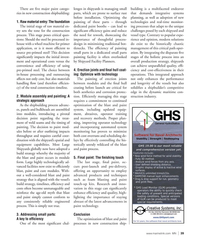 )
April 2024 - Marine News page: 39
)
April 2024 - Marine News page: 39new 1. Raw material entry: The foundation painting of these parts – through technologies and real-time monitor- The initial stage of raw material en- dedicated paint booths – can lead to ing processes that adapt to the unique try sets the tone for the construction signi? cant ef? ciency gains and reduce
-
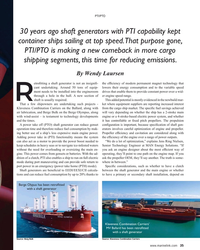 )
February 2024 - Maritime Reporter and Engineering News page: 35
)
February 2024 - Maritime Reporter and Engineering News page: 35PTI/PTO 30 years ago shaft generators with PTI capability kept container ships sailing at top speed. That purpose gone, PTI/PTO is making a new comeback in more cargo shipping segments, this time for reducing emissions. By Wendy Laursen etro? tting a shaft generator is not an insigni? - the ef? ciency
-
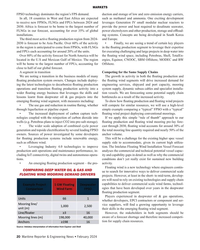 )
February 2024 - Maritime Reporter and Engineering News page: 20
)
February 2024 - Maritime Reporter and Engineering News page: 20MARKETS FPSO technology dominates the region’s FPS demand. duction and storage of low and zero emission energy carriers, In all, 18 countries in West and East Africa are expected such as methanol and ammonia. One exciting development to receive new FPSOs, FLNGs and FPUs between 2024 and leverages
-
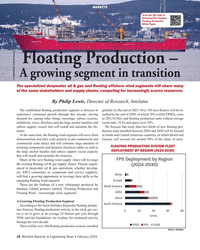 )
February 2024 - Maritime Reporter and Engineering News page: 18
)
February 2024 - Maritime Reporter and Engineering News page: 18MARKETS Scan the QR Code to Download the Intelatus Floating Production White Paper. Floating Production – A growing segment in transition © AdobeStock_Dolores Harvey The specialized deepwater oil & gas and ? oating offshore wind segments will share many of the same stakeholders and supply chains
-
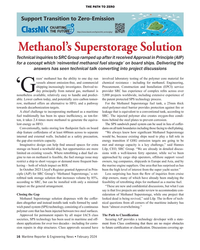 )
February 2024 - Maritime Reporter and Engineering News page: 16
)
February 2024 - Maritime Reporter and Engineering News page: 16THE PATH TO ZERO Methanol’s Superstorage Solution Technical inquiries to SRC Group ramped up after it received Approval in Principle (AIP) for a concept which ‘reinvented methanol fuel storage’ on board ships. Delivering the answers has seen technical talk converting into project discussions
-
 )
February 2024 - Maritime Reporter and Engineering News page: 11
)
February 2024 - Maritime Reporter and Engineering News page: 11gestion pricing by 30 percent on ? ve foot wide passenger cars. livery. Such a system uses the water itself as a bypass intersec- And why not provide dedicated ? ve foot wide traf? c lanes?” tion to deliver cargo point to point without delays, and as long And yes, Ladies and Gentlemen, we will have entered
-
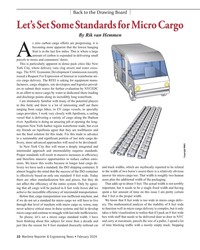 )
February 2024 - Maritime Reporter and Engineering News page: 10
)
February 2024 - Maritime Reporter and Engineering News page: 10, cargo shippers, site developers and logistics provid- ers to submit their wares for further evaluation by NYCEDC in an effort to move cargo by water to dedicated shore loading and discharge points along its incredibly long waterfront. I am intimately familiar with many of the potential players in this ?
-
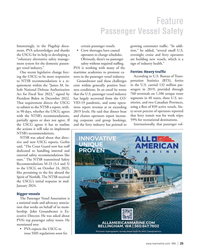 )
February 2024 - Marine News page: 25
)
February 2024 - Marine News page: 25take to implement NTSB’s recommendations. NTSB was asked about that direc- tive and new USCG reports. Gerbis said, “The Coast Guard now has staff dedicated to handling internal and external safety recommendations like ours.” The NTSB transmitted Safety Recommendations M-23 (3,4 and 5) to the USCG
-
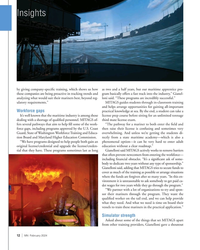 )
February 2024 - Marine News page: 12
)
February 2024 - Marine News page: 12by giving company-speci? c training, which shows us how as two and a half years, but our maritime apprentice pro- these companies are being proactive in tracking trends and gram basically offers a fast track into the industry,” Gianel- analyzing what would suit their mariners best, beyond reg- loni said.
-
 )
January 2024 - Marine Technology Reporter page: 60
)
January 2024 - Marine Technology Reporter page: 60SHOW PREVIEW OCEANOLOGY INTERNATIONAL 2024 All images courtesy Oceanology International • ANB Sensors, developers of revolutionary, calibration updates on information, meeting customers, meeting poten- free pH sensors for ocean monitoring; tial suppliers, hearing what’s happening in the industry – you •
-
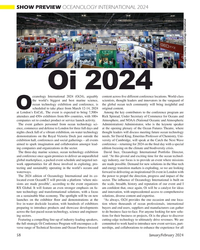 )
January 2024 - Marine Technology Reporter page: 58
)
January 2024 - Marine Technology Reporter page: 58SHOW PREVIEW OCEANOLOGY INTERNATIONAL 2024 All images courtesy Oceanology International Oi 2024 ceanology International 2024 (Oi24), arguably content across ? ve different conference locations. World-class the world’s biggest and best marine science, scientists, thought leaders and innovators in the
-
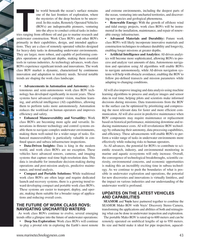 )
January 2024 - Marine Technology Reporter page: 43
)
January 2024 - Marine Technology Reporter page: 43and Portable Solutions: While traditional sible in underwater exploration and operations, the potential work class ROVs are often large and require dedicated for new discoveries and innovations is virtually limitless, and launch and recovery systems, there is a growing trend to- the impact on various
-
 )
January 2024 - Maritime Reporter and Engineering News page: 40
)
January 2024 - Maritime Reporter and Engineering News page: 40ships will be LNG. Expeditionary Fast Transport (EPF 16). The Expeditionary Medical Ship (EMS), an Expeditionary Fast Transport (EPF) variant, is a dedicated medical ship optimized to provide patient holding, stabilization, evacuation and transport in support of Distributed Maritime Operations (DMO)
-
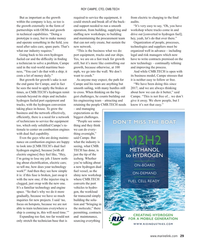 )
January 2024 - Maritime Reporter and Engineering News page: 29
)
January 2024 - Maritime Reporter and Engineering News page: 29ROY CAMPE, CTO, CMB.TECH But as important as the growth required to service the equipment, it from electric to charging to the fnal within the company is key, so too is could stretch and break all of the back- audits. the growth externally in the form of end support needed to run a smooth “It’s very
-
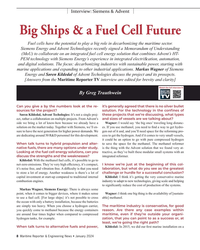 )
January 2024 - Maritime Reporter and Engineering News page: 8
)
January 2024 - Maritime Reporter and Engineering News page: 8Siemens Energy Big Ships & a Fuel Cell Future Fuel cells have the potential to play a big role in decarbonizing the maritime sector. Siemens Energy and Advent Technologies recently signed a Memorandum of Understanding (MoU) to collaborate on an integrated fuel cell energy solution that combines Advent’s
-
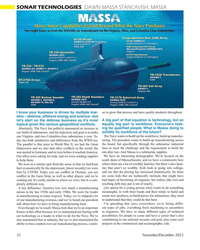 )
November 2023 - Marine Technology Reporter page: 32
)
November 2023 - Marine Technology Reporter page: 32SONAR TECHNOLOGIES DAWN MASSA STANCAVISH, MASSA ue to grow that process and have quality products throughout. I know your business is driven by multiple mar- kets – defense, offshore energy and science –but let’s start on the defense business as it’s most A big part of that equation is technology
-
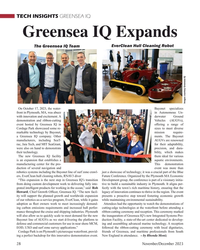 )
November 2023 - Marine Technology Reporter page: 28
)
November 2023 - Marine Technology Reporter page: 28of Greensea IQ’s new Integrated Systems Pro- Bayonet line of AUGVs as we start d-livering the platform to duction Facility, a state-of-the-art center dedicated to develop- defense and commercial customers for use in near shore MCM, ing and assembling advanced marine technology. A reception EOD, UXO and
-
 )
December 2023 - Maritime Reporter and Engineering News page: 30
)
December 2023 - Maritime Reporter and Engineering News page: 30lots of “unknown” design matter Challenger hard sail, designed to transport coal, mainly from one by one.” Australia, Indonesia, and North America as a dedicated vessel As designed, Wind Challenger was expected to reduce for Tohoku Electric Power Co. greenhouse gas (GHG) emissions about 5% on a Japan-Aus- Makoto
-
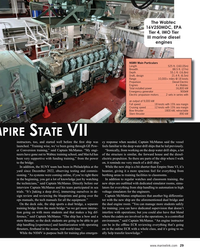 )
December 2023 - Maritime Reporter and Engineering News page: 29
)
December 2023 - Maritime Reporter and Engineering News page: 29In addition to regular watches and classroom training, the the technicians,” said Captain McManus. Directly before our new ships are out? tted with dedicated simulator rooms, simu- interview Captain McManus and his team participated in sea lators for everything from ship handling to automation to high
-
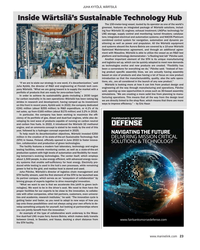 )
December 2023 - Maritime Reporter and Engineering News page: 23
)
December 2023 - Maritime Reporter and Engineering News page: 23, having ramped up its investment ways to improve ef? ciency.” – by Eric Haun on this front in recent years, Kytölä said. In 2022, the company dedicated €241 million (about $255 million) to R&D expenditure, or 4.1% of its net sales, up from €165 million (about $175 million) and 3.2% in 2018. In
-
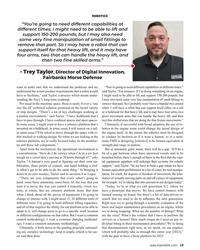 )
December 2023 - Maritime Reporter and Engineering News page: 19
)
December 2023 - Maritime Reporter and Engineering News page: 19ROBOTICS “You’re going to need different capabilities at different times. I might need to be able to lift and support 150-200 pounds; but I may also need some very ? ne manipulation of small ? ttings to remove that part. So I may have a robot that can support itself for that heavy lift, and it may
